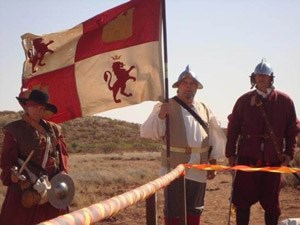
Mission San Miguel de Socorro
Socorro, New Mexico
Coordinates: 31.567472,-111.051842
#TravelSpanishMissions
Discover Our Shared Heritage
Spanish Colonial Missions of the Southwest Travel Itinerary

NPS photo.

Photo by the Historic American Buildings Survey. Courtesy of the Library of Congress.
Plan Your Visit
Mission San Miguel de Socorro, now called the San Miguel Catholic Church, is located at 403 El Camino Real in Socorro, NM. For more information visit the parish San Miguel Catholic Church website or call 575-835-2891. The church is an active Catholic parish and open daily.
Mission San Miguel de Socorro is part of the Socorro Historical District Scenic Byway and is located along the El Camino Real de la Tierra Adentro National Historic Trail, a unit of the National Park Service. The church has been documented by the National Park Service’s Historic American Buildings Survey.
Last updated: April 15, 2016
